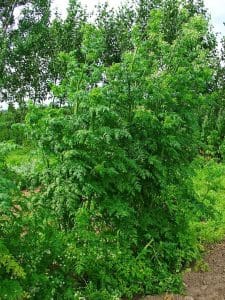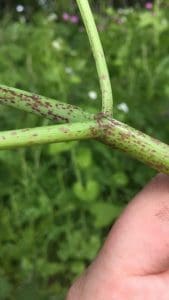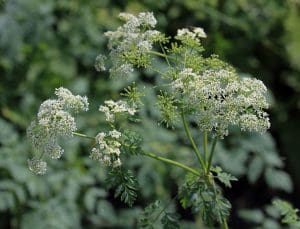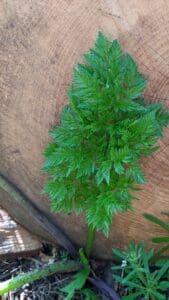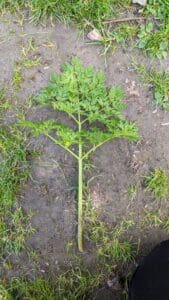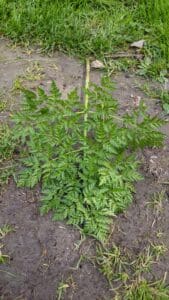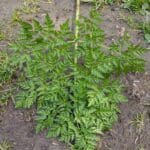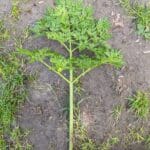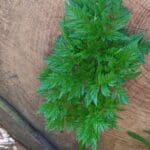Poison Hemlock / Spring / Summer / Deadly
Poison Hemlock is one the most deadly plants found growing in the UK and if you forage for anything at all you should definitely invest time in learning how to safely identify this one. It can grow in quite staggering numbers when it gets a foothold and I’ve even seen it growing intertwined with it’s edible lookalike – Cows parsley.
It’s one of the most deadly toxic plants you will come across quite regularly when foraging and as such is one of the first ones I’d advise learning about.
Common names
Poison Hemlock, Hemlock, Poison Parsley
Botanical Names
Conium Maculatum
Known Hazards
The whole plant is deadly toxic. The seeds and roots are particularly concentrated.
Could be Confused With
Without doing some research and close inspection, Poison Hemlock could quite easily be confused with Cow parsley, or any other of the parsleys. The leaf structure and look of the flowers is almost identical. However there are some key differences. Poison hemlock has purple blotching over the stems which Cow Parsley doesn’t have, Poison Hemlock also has a round stem, whereas Cows Parsley has a ridge in its leaf stems. The last is that Poison Hemlock has a rancid smell compared to the mild parsley smell of Cows Parsley.
Find our in depth guide to Cows Parsley or Poison Hemlock What’s the Difference?
Range and Distribution
Fairly common throughout UK and Europe, also North Africa and Iran
Video for Poison Hemlock
Habitat
Waste ground, damp places, roadsides and hedgerows often avoiding acid soils and heavy shade. Although I find it in many places I often see it more within the fringes of cities and towns. It seems to be more common further South in the UK, but can still turn up anywhere.
Physical Characteristics of Poison Hemlock
Stems
The stems are rounded and hollow with no hairs, it has purple spots or blotches that become more obvious as the plant matures.
Leaves
The leaves are feather-like and grow in opposite pairs with a terminal leaf. The leaves are very similar to Cow Parsley but Hemlock leaves are typically darker and more glossy.
Flowers
The flowers are umbels, meaning the flower stems are like the spokes of an umbrella with the flower clusters at the end, the flowers again are very similar to those of Cow Parsley, with a creamy centre and 5 white unevenly sized petals.
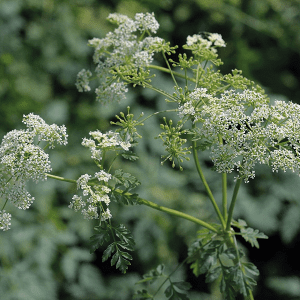
Seeds
The seeds are 2 semi circles, together they make a rounded and striated ball. This plant smells carbolic and unpleasant.
Edible Use
This plant is deadly toxic, do not eat.
Herbal Use
This plant is now not really used as medicine. It has been used as an analgesic, antispasmodic, emetic, galactofuge and sedative, it was also used to treat tumours, epilepsy and whooping cough.
Miscellaneous
Hemlock contains deadly alkaloids that affect the nerves that control the lungs, causing nerve paralysis and those who ingest Hemlock die of suffocation.



